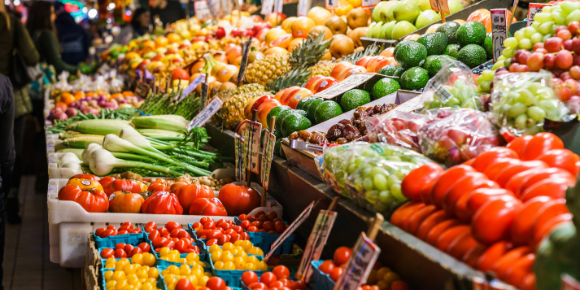As the IMF and countless others point out, 2020 will be a year of reckoning for the world’s food systems. Panic buying, empty grocery shelves and miles-long queues at food banks have suddenly reminded us how important food systems are in our lives, and how imbalanced they have become. Pandemic-induced runs on food, however, do not merely reflect human behaviour during emergencies. They are evidence that the global food supply chain—highly centralized and operating on a just-in-time supply basis—is prone to falter in the face of shocks.
McKinsey’s Feeding the World Sustainably report highlights that greenhouse gas emissions from agriculture are increasing and now make up more than a fifth of all emissions worldwide. A host of practices, from waste to overfishing, as well as increased protein consumption worldwide, is threatening the sustainability of food supplies. The COVID-19 pandemic has bought these concerns to the fore: supply chains and demand have been disrupted, perversely increasing the amount of food waste in farms and fields while threatening food security for many. Cracks in the global food system facade are not new. According to the latest State of Food Security and Nutrition in the World report in 2018 820 million people went to bed hungry and a third of all people lacked essential nutrients. At the same time, 600 million people were categorized as obese and 2 billion overweight due to imbalanced diets. The limitations of the food system go beyond failing to feed the world well. Food produced through the overuse of chemicals, in monoculture cropping systems, and intensive animal farming on land and at sea degrades natural resources faster than they can reproduce and causes a quarter of all man-made greenhouse gas emissions, with livestock responsible for about a half of that. Clearly, we have a serious problem on our hands that needs to be solved - urgently.
In a post-COVID world, as agriculture gradually starts to regain its footing, all stakeholders need to be thinking ahead to safeguarding food supplies against the potentially greater and more disruptive effects of climate change. McKinsey points out how innovation and advanced technologies could make a powerful contribution to secure and sustainable food production. For example, digital and biotechnologies could improve the health of ruminant livestock, requiring fewer methane-producing animals to meet the world’s protein needs. Genetic technologies could play a supporting role by enabling the breeding of animals that produce less methane. Meanwhile, AI and sensors could help food processors sort better and slash waste, and other smart technologies could identify inedible by-products for reprocessing. Data and advanced analytics also could help authorities better monitor and manage the seas to limit overfishing—while enabling boat crews to target and find fish with less effort and waste. Today, the rapid development and deployment of digital technologies and networks promise to accelerate food system transformation by overcoming long-standing market and policy failures. Digital technology drives change on multiple fronts at accelerated rates by collecting, using, and analyzing massive amounts of machine-readable data about practically every aspect of the food system at nearly zero marginal cost. The World Bank’s ‘Beyond the Pandemic: Harnessing the Digital Revolution to Set Food Systems on a Better Course’ suggests the digital revolution offers the possibility of an alternative equilibrium, one where small-scale, flexible organizational and production systems flourish and nimbly navigate a changing operating environment. Small and interconnected may well be our salvation. The hundreds of shallow-draft ships that saved the day in Dunkirk, during World War II, when troops were pinned to the coast and large personnel carriers were no longer seaworthy, come to mind.
If you need help finding super-smart tech talent to help you scale quickly and cost-effectively, working with a remote team in a developing country could be the answer. For more detail around tapping into the best global talent with remote teams, download our eBook, ‘30 Hints & Tips To Get The Most Out Of Your Remote Team’. It will ensure you're informed and have the right questions to ask when considering the next step.




